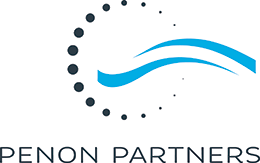Welcome to part V of my five step approach to finding the financial waste in your IT budget.
In today’s globalized world, businesses have access to a diverse pool of IT talent which offers numerous possibilities for optimizing IT staffing strategies. Companies must carefully consider several factors, such as cost, expertise, cultural compatibility, and must decide between onshore, nearshore, and offshore staffing models. Companies must also determine whether to utilize insourced or outsourced IT services and how much senior staff vs junior staff is needed. Each of these choices presents unique challenges and benefits. This article explores staffing options and provides insights into finding the right balance for optimal IT team composition.
Onshore, Nearshore, and Offshore Staffing
- Onshore staffing involves hiring IT professionals within the same country where the company operates. This model offers the advantage of cultural alignment, easy communication, and immediate availability during working hours. However, it may not be cost-effective compared to other options due to higher office costs and labor rates
ㅤ - Nearshore staffing involves hiring IT professionals in neighboring or nearby countries that are in the approximate time zone as customers or onshore staff. This model strikes a balance between cost-effectiveness and proximity, allowing for easier collaboration because of time zone compatibility. Nearshore teams often share similar cultural norms and language, enhancing communication and understanding.
ㅤ - Offshore staffing involves recruiting IT professionals from countries located further away from the company’s headquarters. This model typically offers cost advantages, but it may present challenges in terms of time zone differences and potential language and cultural barriers.
Insourcing vs Outsourcing IT Services
- Insourcing refers to the practice of building and maintaining an in-house IT team. Insourcing retains subject matter expertise, offers greater control over operations, alignment with company culture and values, and potentially faster response times. However, it can be more costly, requiring ongoing investment in office space, recruitment, training, and infrastructure.
ㅤ - Outsourcing involves delegating IT tasks and responsibilities to external service providers. This model can offer cost savings, access to specialized expertise, and scalability. However, it may lead to reduced control over processes and data security concerns, depending on the quality of the contract and outsourcing partner.
Senior Staff vs Junior Staff
- Senior staff brings years of experience, expertise, and leadership. They are capable of handling complex challenges, providing mentorship to junior team members, and making critical decisions. However, senior staff members come at a higher cost, their expertise may not be required for all tasks and they may be reluctant to change legacy methods.
ㅤ
- Junior staff are typically more cost-effective and eager to learn and grow. They can infuse fresh perspectives, contribute to various projects, and handle routine tasks. However, they may require more guidance and supervision, especially in handling complex or high-stakes projects.
ㅤ
Finding the Optimum Balance
- The ideal IT staffing strategy depends on various factors unique to each organization. A hybrid approach that combines different staffing models and blends senior and junior staff can be beneficial.
ㅤ
- Project Complexity: Assign senior staff to projects that demand high-level expertise, while junior staff can handle less complex assignments. This will provide cost-effectiveness and appropriate utilization of skill levels.
ㅤ - Proximity and Time Zones: Consider onshore or nearshore teams when real-time collaboration and communication are crucial. Utilize offshore teams when cost optimization is the primary concern.
ㅤ
- Core Competencies: Insource IT services for areas critical to the organization’s core competencies and strategic initiatives. Utilize outsource resources on non-core functions.
Conclusion
Optimum IT staffing involves striking a balance between onshore, nearshore, and offshore teams, insourcing, and outsourcing IT services, and leveraging both senior and junior staff. By carefully assessing project requirements, cost considerations, expertise, and cultural alignment, organizations can create a dynamic and efficient IT team that maximizes value, innovation, and business success. Flexibility and adaptability are key as organizations navigate the ever-changing technology landscape and workforce dynamics.
Would you like help assessing your current IT staffing situation and needs? Schedule time to chat with me. I’ll be happy to talk. Calendly – Andy Smith

